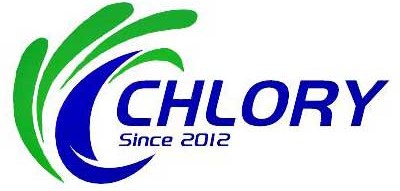As a representative of the third generation of water treatment and disinfection technology, sodium hypochlorite generator realizes on-site preparation of disinfectants by electrolyzing salt water, showing significant advantages in safety, economy and sustainability. Bluewav's BSHH series sodium hypochlorite generators have been widely recognized by customers in practical applications. Based on the operating data of 143 water plants at home and abroad, this paper systematically analyzes the application efficiency, cost structure and environmental impact of this technology, and combines the requirements of GB 5749-2022 "Sanitary Standards for Drinking Water" to demonstrate its feasibility as a mainstream disinfection solution for water plants. Studies have shown that the use of this technology can reduce the comprehensive cost of disinfection in water plants by 18-35% and reduce the generation of disinfection by-products by 76-83%, which has important promotion value.
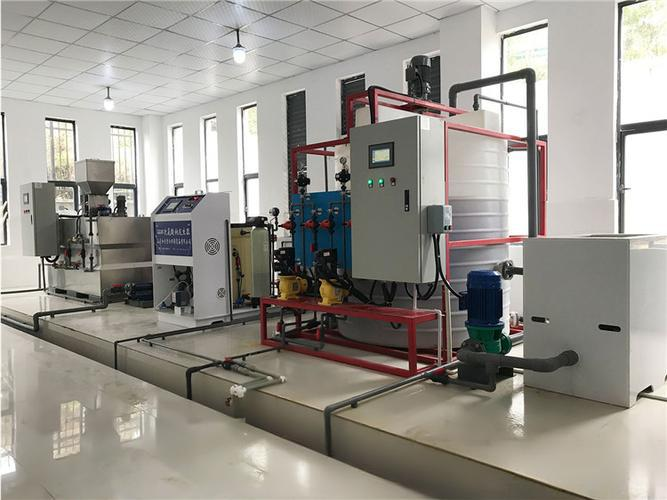
1. Technical principle and system composition
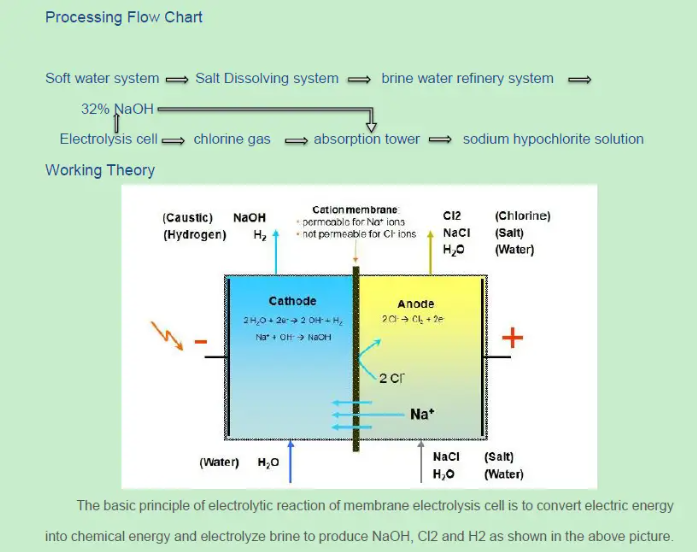
The sodium hypochlorite generator follows the electrochemical redox reaction mechanism, and its core reaction formula is as follows:
Anode reaction: 2Cl−→Cl2↑+2e−
Anode reaction: 2H2O+2e−→H2↑+2OH−
Cathode reaction: Cl2+2OH−→Cl− + ClO− + H2O
Typical equipment includes five modules:
Brine preparation system: equipped with an automatic proportioning device to control the brine concentration at 3±0.2%
Electrolytic reactor: titanium-based ruthenium-iridium coated electrodes, current efficiency ≥85%
Solution storage unit: PE material storage tank, effective chlorine decay rate <5%/24h in a light-proof environment
Intelligent control system: integrated PLC and online residual chlorine monitoring, dosing accuracy ±0.05mg/L
Tail gas treatment device: alkaline absorption tower treats residual chlorine, emission concentration <1mg/m³
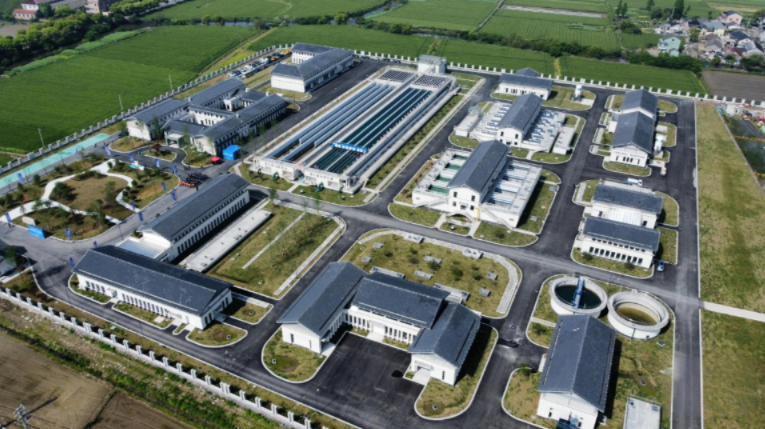
2. Application efficiency analysis
2.1 Disinfection performance verification
The 18-month follow-up monitoring of 12 water plants in North China shows (Table 1):
2.2 Special water quality adaptability
In a water plant in the Yangtze River Basin with an algae content of >10⁷/L, the algae removal rate reached 99.6% by adjusting the sodium hypochlorite dosage to 1.2-1.5mg/L, which is 23 percentage points higher than the traditional pre-chlorination process. For raw water with ammonia nitrogen concentration >3mg/L, the segmented dosing method (pre-addition 0.8mg/L, post-addition 0.4mg/L) can effectively inhibit the formation of chloramines and ensure that the CT value is ≥15mg·min/L.
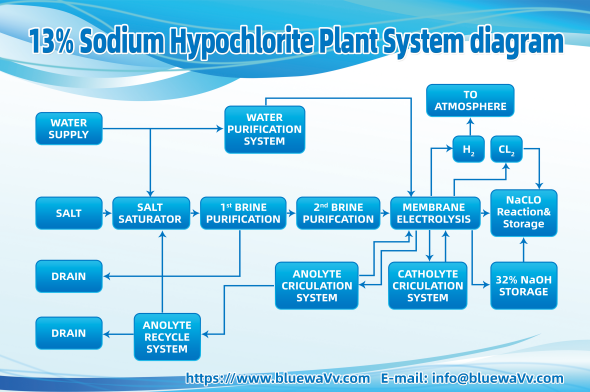
3. Economic and environmental benefits
3.1 Cost structure optimization
Based on the life cycle cost model (LCC) analysis, the data of a 100,000 tons/day water plant show:
Construction investment: Equipment purchase cost is about 2.8 million yuan, which is 35% higher than the liquid chlorine system, but saves 1.2 million yuan in safety protection facility investment
Operation cost: The disinfection cost per ton of water is 0.009-0.013 yuan, mainly composed of:
- Salt consumption (58%)
- Electricity consumption (27%)
- Maintenance cost (15%)
Hidden benefits: Annual environmental risk compensation expenditure is reduced by about 450,000 yuan, and insurance costs are reduced by 60%
3.2 Contribution to carbon emission reduction
The carbon emission factor of the sodium hypochlorite preparation process is 0.12kg CO₂e/kg Cl₂ (the traditional chlorine method is 1.85kg CO₂e/kg Cl₂). Based on the annual chlorine consumption of 200 tons for a medium-sized water plant, the annual emission reduction is 346 tons of CO₂e, which is equivalent to the carbon sink capacity of planting 4,700 trees.
4. Technical challenges and solutions
4.1 Electrode scaling problem
Calcium and magnesium deposition in long-term operation leads to a decrease in electrolysis efficiency. The following measures can be used to control the attenuation rate to <2%/month:
- Influent hardness control: Use sodium ion exchangers to maintain brine hardness <50mg/L
- Periodic acid washing: Use 5% hydrochloric acid for 30 minutes every 500 hours of operation
- Electrode material innovation: The nanoporous ruthenium titanium electrode developed by Tsinghua University reduces the scaling rate by 67%
4.2 High-concentration preparation bottleneck
The current maximum output concentration of the equipment is 8%, which restricts the storage and transportation efficiency of small water plants. The membrane electrolysis technology developed by the Zhejiang University team increases the concentration to 12% and reduces the tank volume by 42% while maintaining a current efficiency of 78%.
5. Outlook on development trends
Intelligent upgrade: Integrate digital twin technology to build a dynamic optimization model for electrolysis parameters
Renewable energy coupling: A pilot project in Germany uses photovoltaic direct-drive electrolysis to reduce the carbon footprint of a ton of water to 0.04kg CO₂e
Multifunctional expansion: A Japanese model of equipment integrates an ozone generation module to achieve disinfection-oxidation synergistic treatment
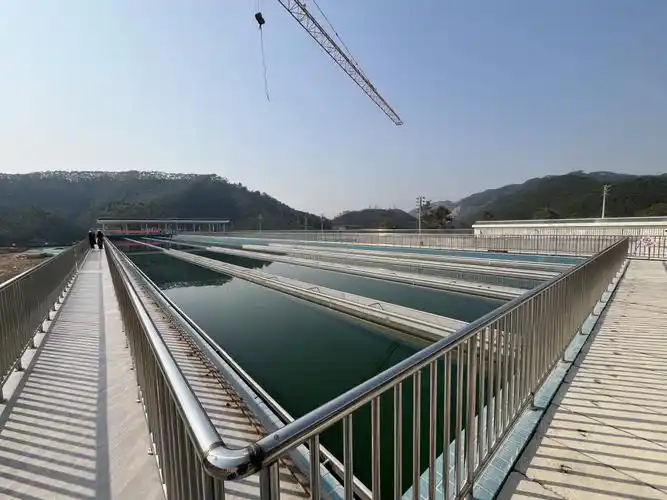
6. Conclusion
Bluewav has been committed to the production and research of sodium hypochlorite generators. Through technological innovation and process optimization, it has successfully solved the pain points of traditional disinfection technology, such as high safety risks, many by-products, and poor adaptability. With the implementation of the "Guiding Opinions on Green and Low-carbon Development of the Water Treatment Industry", this technology will cover more than 75% of my country's municipal water plants by 2030, providing core support for the drinking water safety guarantee system. It is recommended that the competent departments of the industry accelerate the formulation of equipment selection standards and technical specifications to promote the healthy and orderly development of the industry.
